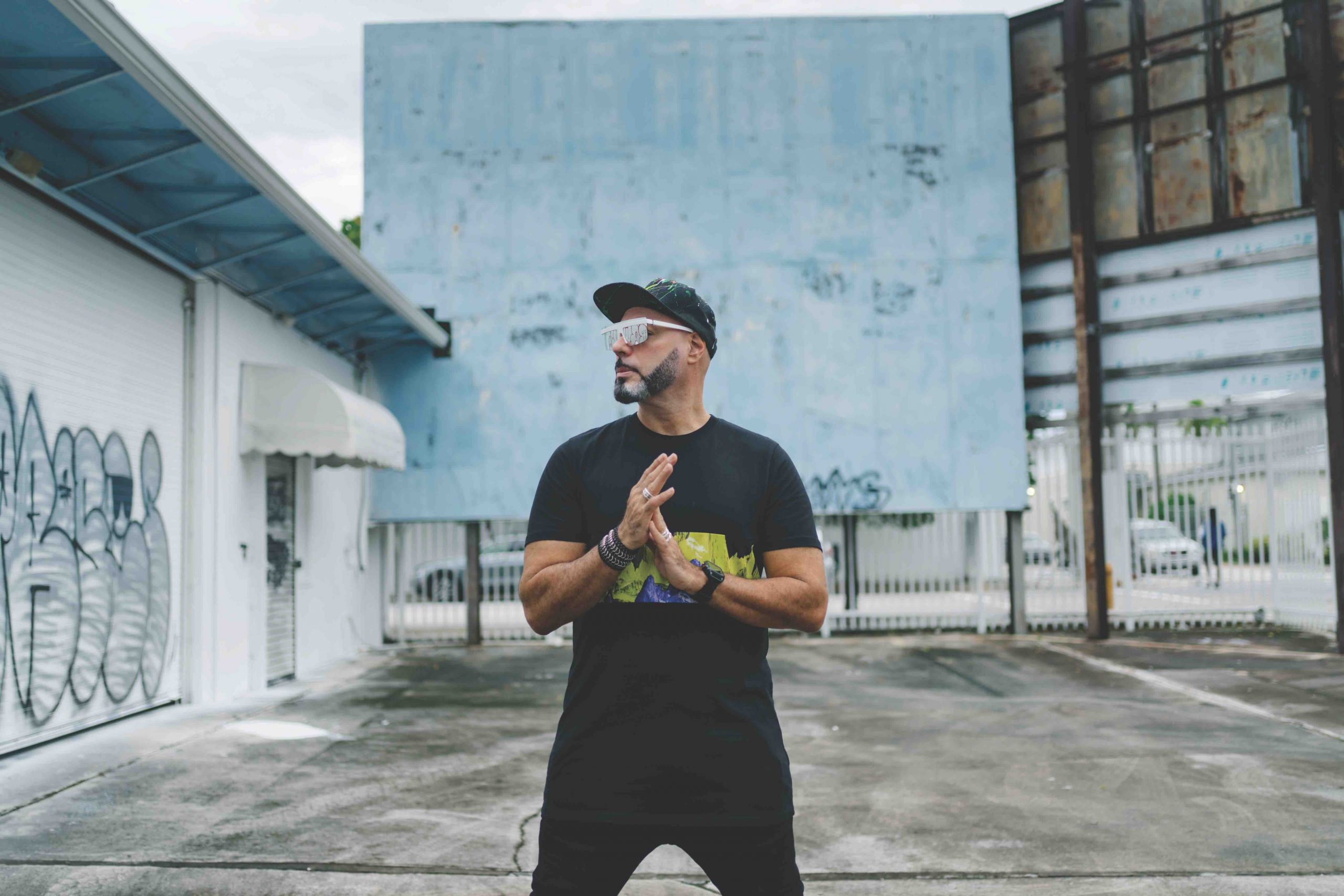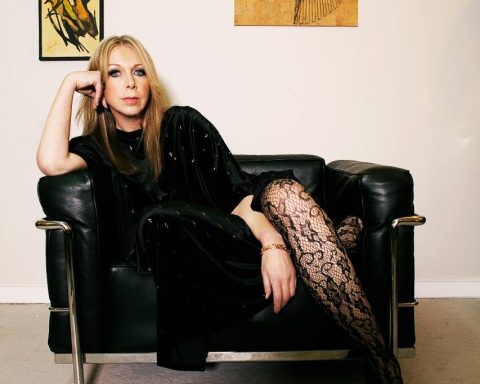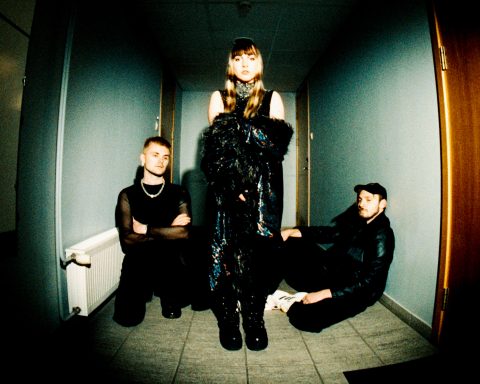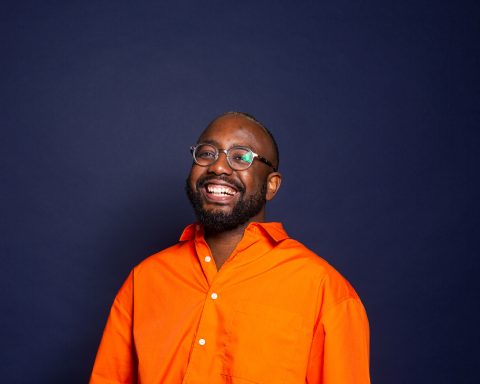There are few names more synonymous with the origins of New York’s house music scene than Roger Sanchez. Alongside contemporaries like Masters at Work, Frankie Bones, David Morales, and Danny Tenaglia, he helped form the foundation for the burgeoning genre in the late ’80s and early ’90s. Infusing Chicago’s trademark warehouse sounds with the spirit of early hip-hop and the waning sounds of disco, Sanchez and friends created something entirely fresh.
A World Before Genres
“When I first started, there was no house music. There were no real electronic genres,” he says. His early DJ sets included Chicago records that would later become known as house music. Still, Sanchez played whatever would “create a dance environment.”
He explains that those early sets were an amalgam of early hip-hop, cutting and scratching breaks from funk, soul, and disco records. Dance music became expansive because its origins were broad. The multi-genre patchwork of loosely related styles was born from that early experimentation.
“That’s where my love of dance music started,” Sanchez shares. “That early conversation of different styles of music and finding the elements that work to move a dance floor.”
“That early conversation of different styles of music and finding the elements that work to move a dance floor. That's where my love of dance music started."
Culture and Community
He grew up during the cultural renaissance that gave us hip-hop, house, techno, breakdancing, and graffiti. And Sanchez recognizes that there is a similar spirit that lives on today. Communication has sped up how quickly counterculture becomes a mass movement. Still, the mentality that opened up the dance floor remains the same. “People want to connect, they want to have a great time, they want to dance.”
It’s a mentality that continues to drive the culture through its explosive transition into the mainstream. The hyper-local scenes that birthed idiosyncratic styles like Chicago house, Bmore, and garage house may have dissipated in a more connected world. Yet the ideology remains.
“The movement is far quicker, so the gestation period is a lot shorter,” he says. “You’ll find some places in the world where they have these underground events. And there will be a particular type of scene or group of people that get together to form their nucleus. But it quickly gets exposed and becomes a lot wider because of social media.”
“People want to connect, they want to have a great time, they want to dance.”
Reigniting the Fire
These micro-communities were part of the foundation for the early rave movement. Indeed, community is often the precursor to counterculture. These communities got somewhat neglected in a post-EDM, pre-pandemic world. However, after two years of living entirely online, Sanchez sees those communal tenets reignited.
Moreover, Sanchez has the history to understand how a social shift can become part of his success. Regular Twitch streams helped form new direct-to-fan connections that hadn’t previously existed for him.
“Creating direct interaction with fans where you normally wouldn’t have been able to while you’re performing at a club. It gave the sense of closeness that people never really had the opportunity to have with artists.”
“Creating direct interaction with fans gives the sense of closeness that people never really had the opportunity to have with artists.”
The Power of Time
Even more importantly, he’s learned a valuable lesson about the value of time. “I’ve been telling people, it’s the only true currency that we have as human beings. Nothing that we own, nothing that we do is really ours,” he posits. “We hold on to things, we lease life in a way. We lease the things that we get our hands on because eventually they’ll either break down or are given away.”
It’s a philosophy he takes seriously. “The only thing we have that’s truly ours is our time. And how you use that determines the quality of your life.”
To that end, the pandemic also offered Sanchez a chance to build a new studio in his current hometown, Miami. Throughout his career, the means of production and DJing have changed countless times. Where he used to lug several crates of records to a gig, he now has an entire lifetime of music on a two-inch flash drive.
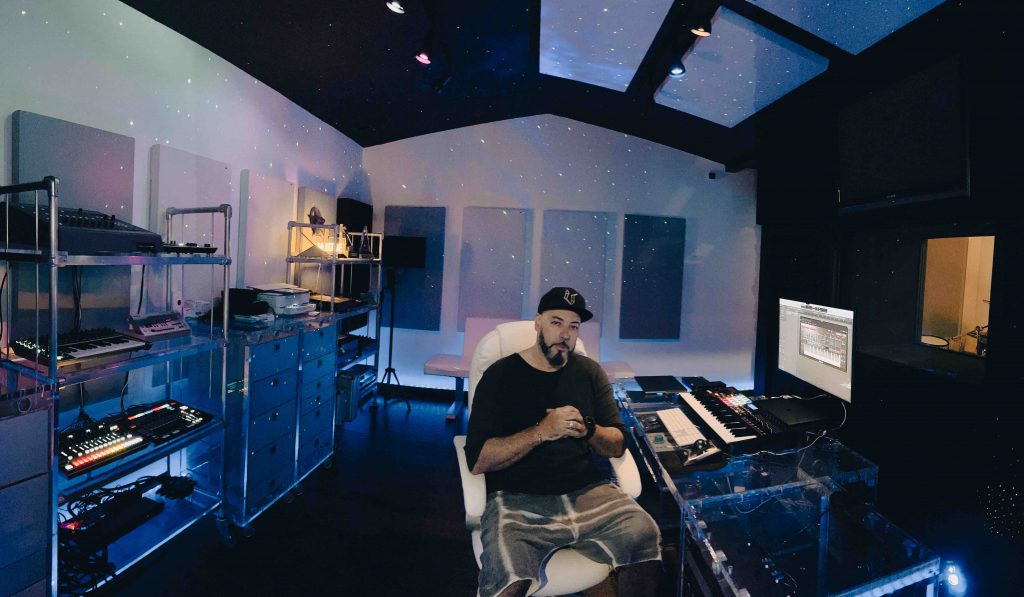
Head in the Cloud
Dance music’s backbone lies in workhorse machines like the TR-808, TR-909, and the JUNO-106. It’s been almost two decades since he felt tied to the studio. Now, with Roland Cloud, he can carry an entire library of classic synths on his laptop worldwide.
“One thing I love about Roland Cloud is the vast array of sounds that become available,” Sanchez enthuses about the service. “And the ability to do sound design with VSTs is very close to how you do it when you’re actually on the box itself.”
“For every dance music producer who came up in the 1980s and '90s, a JUNO-106 is the machine. One thing I love about Roland Cloud is the vast array of sounds that become available.”
Trusting the Process
Sometimes, all those choices can make moving from sound exploration into production challenging. As a result, he sets aside time to truly explore each Roland Cloud instrument.
“You can literally get lost going down rabbit holes of 25 million patches,” Sanchez reveals. “What I try to do is give myself some time to not worry about creating something. I just go through sounds and play and earmark ones that appeal to me.”
This freeform part of the process leads him into the next phase. “Then, I have a sound design day after I’ve programmed some ideas, thoughts, or patterns. Taking some of the sounds and playing with them and chopping them up a different way or changing filters.”
Back to the Foundation
When asked if he can pinpoint a favorite piece of gear in the studio, Sanchez inevitably goes back to the foundational synths of dance music.
“For every dance music producer who came up in the 1980s and ’90s, a JUNO-106 is kind of like the machine,” he states decisively. “That and the 909 and the 808 drum machines are the ones that you could squeeze the most out of. And literally reconfigure and reinterpret each of the sounds in so many different ways.”
Even if those machines don’t find their way onto a track, it’s not the end of the story. Sanchez often goes back and tries to build using tried-and-true core elements because they work so well.
Life Lessons
Sanchez recognizes that he’s been fortunate in making his passion his profession. It’s something that he’s done by design. When his DJing career began to take off in the early ’90s, he was studying architecture. His father was the one that ultimately helped him decide to pursue music full time.
“When my grades started slipping he had that conversation with me. He’s like, ‘Look, I see you doing this DJing thing. I know you’re studying architecture, but don’t be an architect because you think it’s going to make me happy. You need to do what makes you happy.’”
His father’s encouragement lit a fire beneath Sanchez and for that he is grateful. “Instilling in me the drive to work hard was the best gift I got from him. But how I directed that drive, and where I directed it was really up to me.”
“I've remembered how to have fun. Most people are just trying to see what happens and how they can express themselves.”
A Pivotal Idea
Again, Sanchez returns to the notion of best utilizing the time we have. “What you have to ask yourself at the end of the day is, ‘How do I want to spend my moments in my life?’” he explains. “Do I want to work because I think this is the way to put food on the table, or do I want to devote myself so that I truly enjoy the time I spend?”
He measures the results of his efforts with a similarly holistic outlook. “No matter how much or how little you made, it fades into insignificance if you spent the majority of your life doing what you didn’t want to do.”
This ideal is pivotal to the nature of the artist. And as someone in dance music, it all links back to something else Sanchez rediscovered recently.
“I’ve remembered how to have fun,” he says with a smile. “It’s interesting. When you start out, you’re trying to make something and going by the gut. Most people are just trying to see what happens and how they can express themselves.”
The Fine Art of Keeping Things Fresh
He explains the dilemma of finding a sound that works while people insist you keep pounding that same vibe into the ground. “We get caught in certain cycles, and sometimes you don’t move too far from the same decisions. And then creatively you run out of steam,” he explains. “That’s when creativity starts to kind of come at a crossroads with productivity. And that’s a dangerous place.”
Yet even after nearly 40 years in the industry, Sanchez is still rediscovering that sweet spot. That beautiful space where creativity is all that matters.
“What I’ve learned is that’s when you stop having fun when it becomes a job.” He has an antidote, however. “To retain creativity, you have to maintain the professionalism of a job, but the creativity of having fun. Not give a crap what anybody thinks, and just express yourself.”
